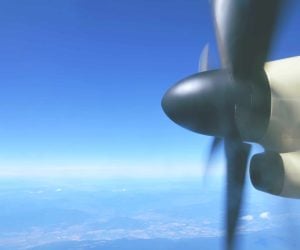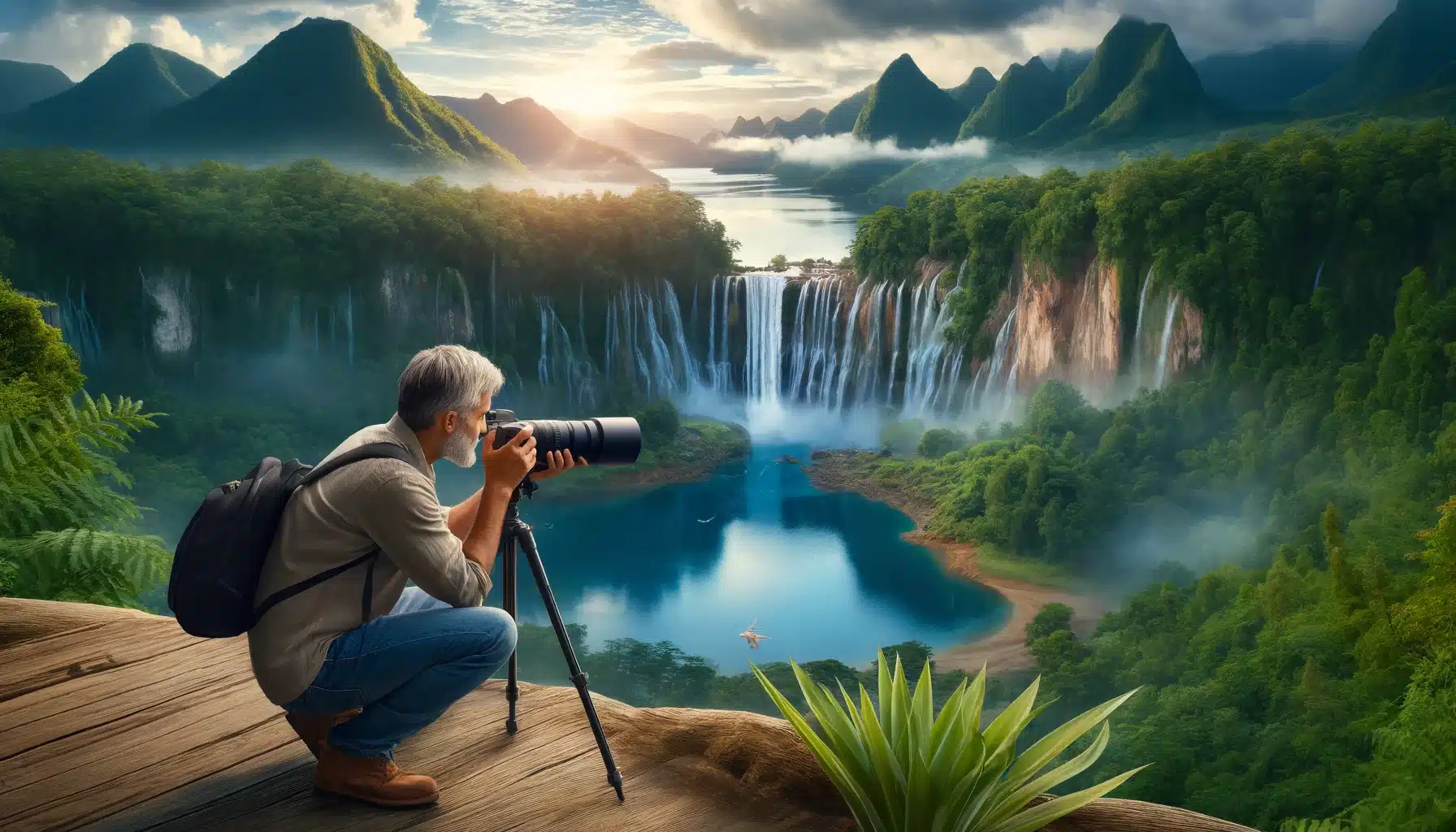
Introduction to the Best Landscape Photography Lenses
Imagine standing at the edge of a serene lake, surrounded by towering mountains. A wide-angle lens would capture the entire scene, from the mirror-like reflection of the mountains in the water to the vast expanse of the sky above. Landscape photography is about capturing the beauty of nature, from sweeping vistas to intricate details. To capture these moments effectively, you rely on specialized tools known as the best landscape photography lenses.
These lenses are designed to enhance clarity, depth, and color in outdoor settings, making them essential for anyone looking to capture stunning landscapes.

Table of Contents
Understanding the Best Landscape Photography Lenses
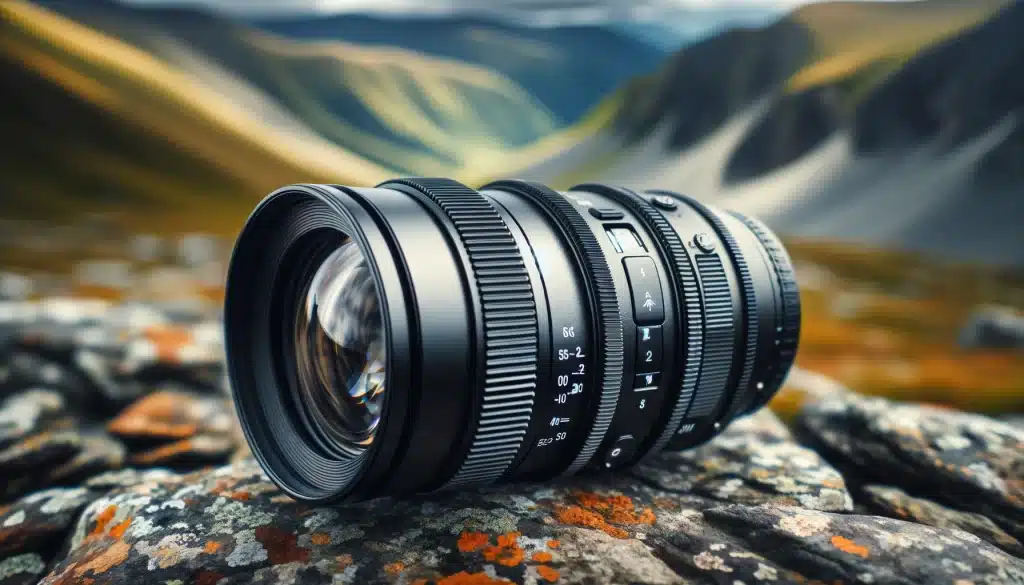
Landscape photography lenses come in various types, weights, and focal margins, each serving a unique purpose in capturing different aspects of a scene. Let’s explore some common premier landscape photography lenses:
Wide-Angle Lenses: Superior Landscape Photography Lenses
These lenses have a broad field of view, making them ideal for capturing vast landscapes, expansive skies, and dramatic perspectives. For example, when photographing a panoramic mountain or a wide-open field, a wide-angle lens helps encompass the entire scene. It showcases the capabilities of landscape photography lenses.
Telephoto Lenses: Premier Landscape Photography Lenses
Macro Lenses: Top-rated Landscape Photography Optics
While primarily used for close-up photography, macro lenses can also capture intricate details within a landscape, such as the delicate petals of a flower or the texture of a rock formation. They add a unique perspective to landscape shots by highlighting small, often overlooked features. While buying a macro-Lense, think about the focal length of the lens. You can try different lengths for amazing snaps.
Macro lenses are made to capture small details up close, so consider how close you want to get to your subject. Next, look at the maximum magnification of the lens. This tells you how big your subject will appear in the final picture. Also, pay attention to the aperture of the lens. A wider aperture lets in more light, which can help you get sharp photos, especially in low-light situations. Consider the weight and size of the lens too.
Macro lenses offer you the opportunity to explore the minutiae of landscapes, representing the capabilities of landscape photography lenses in capturing fine details.
Key Factors to Consider When Choosing Superior Landscape Photography Lenses
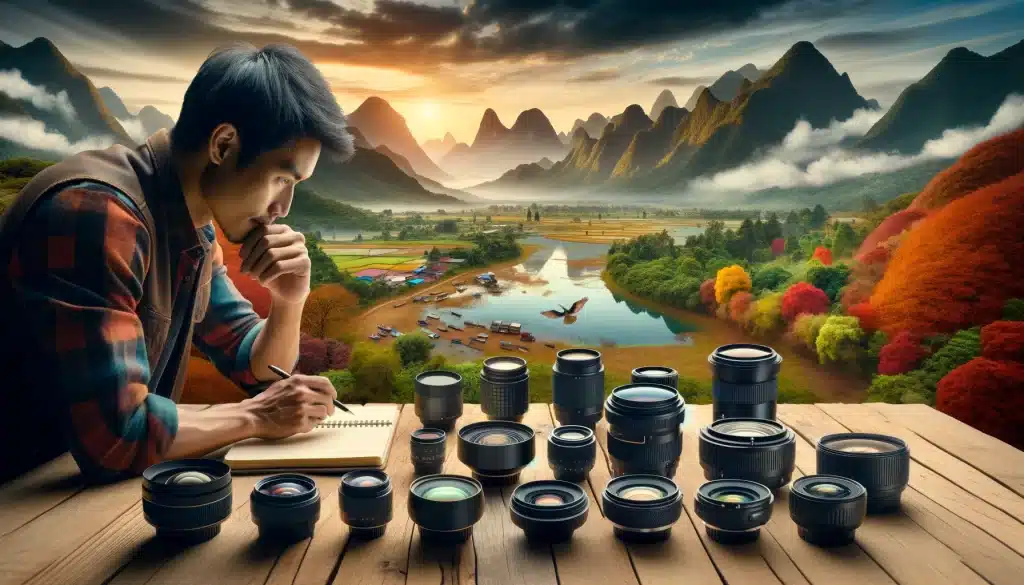
1. Focal Length
The focal length of a lens determines its full field of view and magnification. For landscape photography, wide-angle lenses with focal distances between 14mm to 35mm are commonly preferred.
The focal points, such as 24-70mm or 70-200mm, provide flexibility in capturing various types of landscapes and compositions. These lenses allow you to capture expansive scenes and include more elements in your frame, emphasizing the vastness and beauty of nature.
2. Aperture Size for Top-rated Landscape Photography Optics
The aperture of a lens plays a vital role in controlling light and depth of field. A wide aperture (represented by a lower f-number, e.g., f/2.8) allows more light to enter the lens. Which makes it suitable for low-light conditions and achieving a shallow depth of field. This can create beautifully blurred backgrounds, highlighting the main subject in your landscape photos.
3. Image Stabilization
Landscape photography often involves picturing in challenging conditions, such as windy environments or uneven terrain. Opting for a lens with built-in image stabilization can help mitigate camera shake, resulting in sharper and clearer snaps, especially when using longer focal length or shooting handheld.
4. Lens Quality and Construction
Investing in high-quality lenses with robust construction, less weight, and weather sealing can withstand outdoor elements, ensuring durability and longevity. Superior lens coatings can also reduce lens flare and enhance color rendition, contributing to the overall image standard.
Key Features Comparison of Landscape Photography Lenses
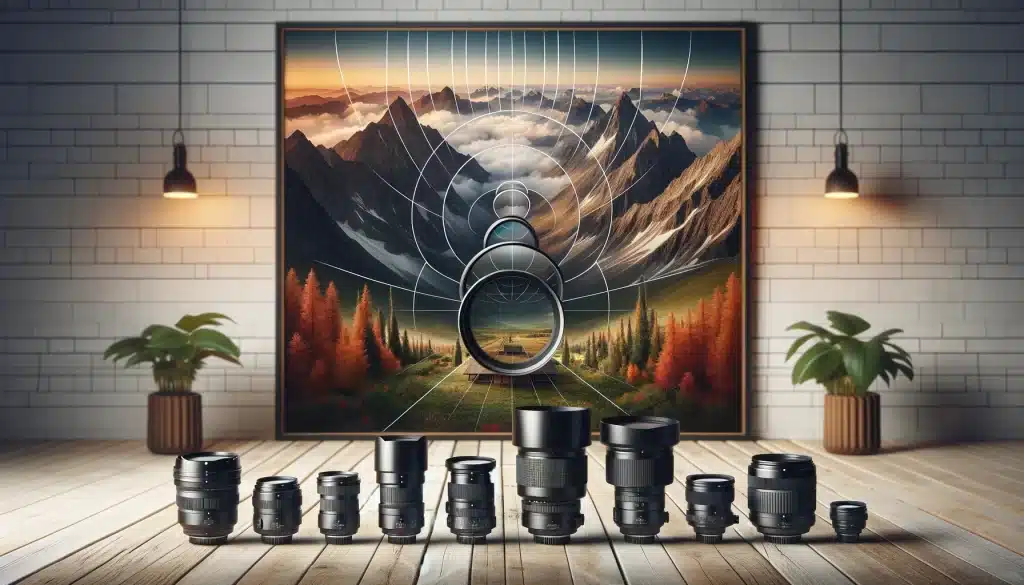
| Lens Type | Focal Length | Aperture | Image Stabilization | Weather Sealing | Common Uses |
|---|---|---|---|---|---|
| Wide-Angle | 14mm – 35mm | f/2.8 – f/22 | Optional | Yes | Capturing expansive landscapes, dramatic perspectives |
| Telephoto | 70mm – 200mm | f/4 – f/32 | Yes | Yes | Capturing distant details, compressing perspective |
| Macro | 60mm – 105mm | f/2.8 – f/32 | No | No | Capturing close-up details, intricate textures |
Budget-Friendly Options: Affordable Landscape Photography Lenses

In the realm of landscape photography, finding budget-friendly options for lenses can greatly benefit you. These lenses, while affordable, still offer standards and full functionality suitable for taking captivating landscapes.
Wide Availability
People wonder that it may be difficult to get an affordable lens with ease, but that is not the case. Budget-friendly landscape photography lenses are widely available in the market, catering to a broad scope of photographers. You can easily find the best landscape photography lenses choice anywhere in the market at reasonable prices.
Competitive Pricing
Many of us dream of becoming a professional photographer. We also might think of the budget we have to prepare to buy the best landscape photography lenses. These lenses are priced competitively, making them accessible to photographers on a tight budget.
Decent Image Quality
You may think that on a low budget, you will get a low-grade camera that can not fulfill the requirements. Despite their affordability, budget-friendly landscape photography lenses can still deliver decent image status, suitable for amateur and hobbyist people. So you can maintain the class with the budget for the best landscape photography lenses.
Basic Features
You need a few basic factors that count in the photography at a low price. Low-priced lenses often come with essential features such as autofocus, zoom lens, and a full wide aperture range shot, fulfilling the basic requirements for landscape photography.
Lightweight and Portable
One of the amazing advantages of the best landscape photography lenses is that their weight is less, and easy to carry and transport. Many budget-friendly superior landscape photography lenses are light in weight and portable, making them convenient for outdoor shooting sessions.
Best Landscape Photography Lenses Options Professional Photographers
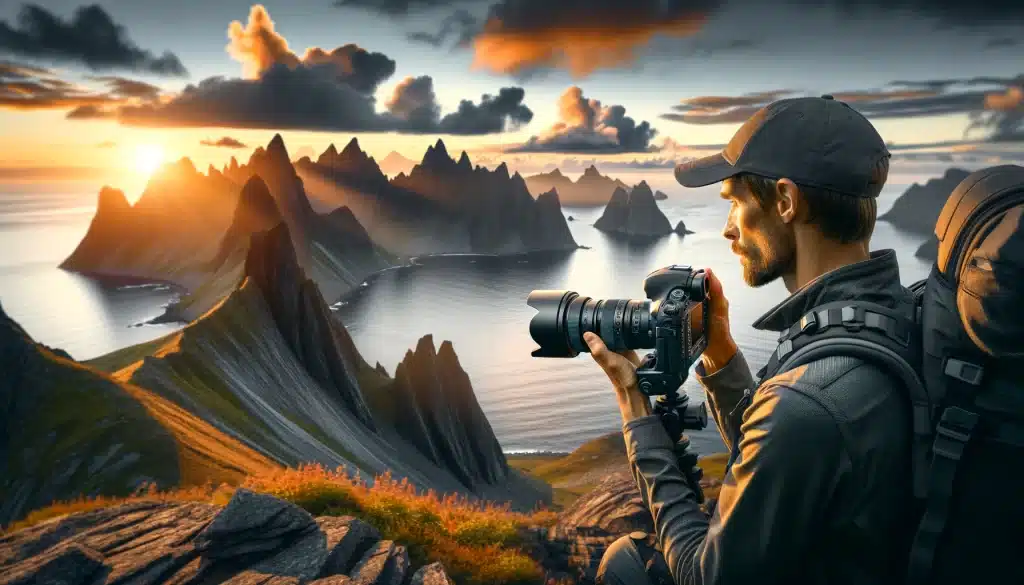
Experienced cameramen often require top-rated landscape photography optics to meet their demanding creative needs. These advanced lens options offer superior performance and precision, enabling you to capture breathtaking landscapes with exceptional clarity and detail.
1. Wide-Angle Prime Lenses for Maximum Sharpness
Wide-angle prime lenses are a favorite among professional cameramen for their maximum sharpness and minimal distortion. They excel in capturing intricate details and expansive scenes with exceptional clarity.
For example, when photographing a rugged mountain range at sunrise, a wide-angle prime lens can render every peak and valley with impeccable sharpness and definition.
2. Telephoto Zoom Lenses for Versatile Compositions
Telephoto zoom lenses provide professional cameramen with versatile compositional options for capturing landscapes. They offer many focal points, allowing you to adjust their compositions and focal points seamlessly.
For instance, when photographing a cascading waterfall from a distance, a telephoto zoom lens can frame the scene creatively, emphasizing the water’s movement and surrounding foliage.
3. Tilt-Shift Lenses for Creative Control
Tilt-shift lenses are highly sought-after by professional landscape shooters for their unique ability to control perspective and depth of field. They enable you to tilt and shift the lens elements, creating beautiful effects such as miniature landscapes or selective focus.
For example, when capturing a cityscape with towering buildings, a tilt-shift lens can correct vertical distortions and create a visually striking composition.
4. Choosing optics for APS-C, Mirrorless, and EOS Cameras in Landscape Shooting
Exploring the best lenses for landscape photography often involves considering options compatible with APS-C mirrorless cameras, and EOS cameras. APS-C glass, like the Canon EF-S 10-18mm f/4.5-5.6 IS STM, is known for its compact size and excellent performance. Mirrorless lenses, such as the Sony FE 16-35mm f/2.8 GM, offer versatility and advanced features like silent shooting and fast autofocus.
Tips for Maximizing the Performance of Your Best Landscape Photography Lens
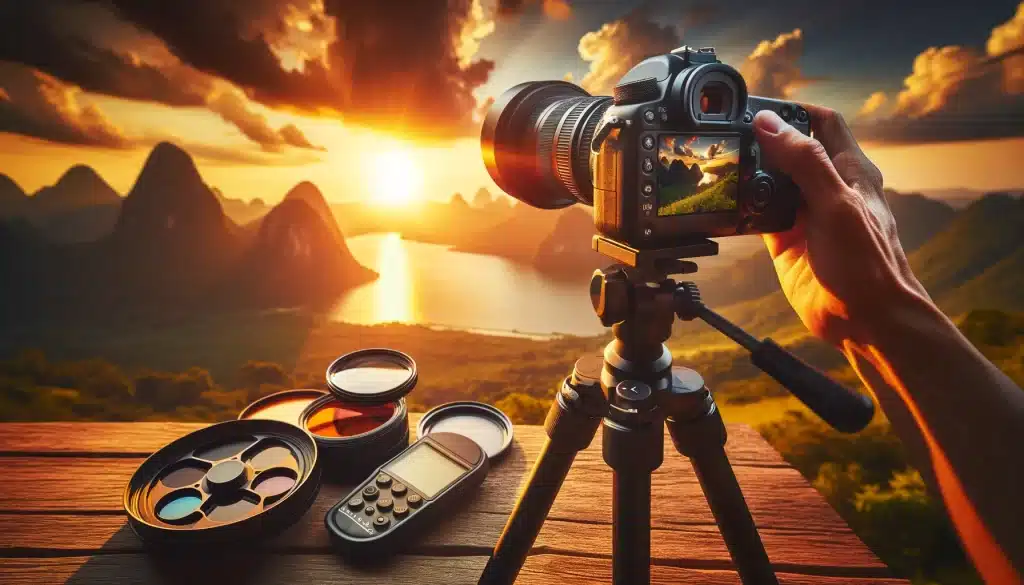
Maximizing the performance of your lens is essential for capturing stunning landscapes with clarity and detail. Here are some tips to optimize the capabilities of your excellent landscape photography gear:
Keep Your Superior Landscape Photography Lenses Clean
Ensure that your photo lens is kept clean and free from dust, smudges, or debris. Regularly clean the lens surface with a soft microfiber cloth to maintain optimal image grade. This kind of practice makes your cameras the best landscape photography lenses.
Use Lens Hoods for Protection
Utilize lens hoods to shield your picturing lens from direct sunlight, glare, and unwanted reflections. This helps prevent lens flare and improves contrast in your landscape photos. I always keep my lens hood with me to provide extra protection to my glass.
Avoid Extreme Temperatures
Landscape photography is directly associated with harsh temperatures whether it’s sunny or rainy. Protect your lens from extreme temperatures, such as excessive heat or cold. Sudden temperature changes can affect your best landscape photography lenses performance, so store your equipment in a suitable environment.
Handle with Care
Handle your nature filming optics with care and avoid exposing them to unnecessary impacts or rough handling. This helps prevent damage to the lens elements and maintains overall performance. Make sure you keep it inside the cover while roaming around. In the end, don’t forget to edit your photos in an editing software such as Photoshop.

Optimize Settings for Sharpness
Some factors are very essential in the shooting domain. Adjust your camera settings, such as aperture, shutter speed, and ISO, to optimize sharpness and detail in your landscape photos. Experiment with different settings to achieve the desired results with your best landscape photography lenses.
Use Tripods for Stability
When you’re out capturing natural areas with your best landscape photography lenses, consider using a tripod for added stability. A sturdy tripod helps prevent camera shake, resulting in sharper retakes, especially in low-light situations or when taking long exposure shots. By using a tripod, you can enhance the standard of your photos and ensure that every detail is captured with precision.
Explore Different Focal Lengths
When you’re out with your photography lens, try out different focal distances to capture various views and styles. Wide-angle lenses are perfect for big, sweeping landscapes, giving you a wide view of everything around you.
On the other hand, telephoto lenses ultra zoom in on faraway details, bringing distant objects closer and making them stand out. Experimenting with different focal distances lets you play with quick perspective and create unique compositions in your photos.
Top Companies with Excellent Cameras for Capturing Images

In the world of capturing photos, several companies stand out for their fantastic camera offerings. Let’s delve into the features and strengths of cameras from these top companies.
Sony: Advanced in Every Frame
Sony cameras are known for their fast autofocus and innovative features. With the capability of APS-C and full-frame options, Sony cameras offer immense versatility for you. The E-mount system provides a wide selection of glasses, ensuring that every shot is captured with precision and clarity.
Canon: Unmatched Performance and Reliability
Canon cameras are renowned for their reliability and performance. The EF mount system allows for seamless compatibility with a variety of lenses, from wide-angle, providing you with a massive scope of options for framing their shots. Canon cameras are known for their excellent standard and ease of use.

Nikon: Precision and Detail in Every Shot
Nikon excels in capturing quick action and detailed pictures. The F-mount system ensures compatibility with a vast array of lenses, offering you flexibility in choosing the right focal margins for their shots. Nikon cameras are known for their durability and ability to capture awesome shots in various lighting conditions.
Fujifilm: Compact Size, Impressive Results
Fujifilm cameras combine compact size with amazing performance. The X-mount system provides a variety of optics suitable for different shooting scenarios. Fujifilm cameras are known for their excellent color reproduction and film simulation modes, allowing you to achieve stunning results straight out of the camera.
Panasonic: Cutting-Edge Technology for Creative Minds
Panasonic cameras feature cutting-edge technology for capturing creative shots. With the advanced system, Panasonic cameras offer a compact size without compromising on class. The quick autofocus and 4K video capabilities make Panasonic a favorite brand among professionals.
Olympus: Innovation in Micro Four Thirds
Olympus optics excel in the Micro Four Thirds system, giving an excellent size and performance. The fast autofocus and image stabilization mode ensure sharp and steady shots in various filming conditions. Olympus is known for its rugged build and weather sealing, making it ideal for outdoor pictures.
These companies have different prices for the passionates. You can see below what price suits your budget.
| Company | Price Range (USD) |
|---|---|
| Sony | $500 – $5000 |
| Canon | $400 – $6000 |
| Nikon | $450 – $5500 |
| Fujifilm | $600 – $4000 |
| Panasonic | $400 – $3000 |
| Olympus | $500 – $3500 |
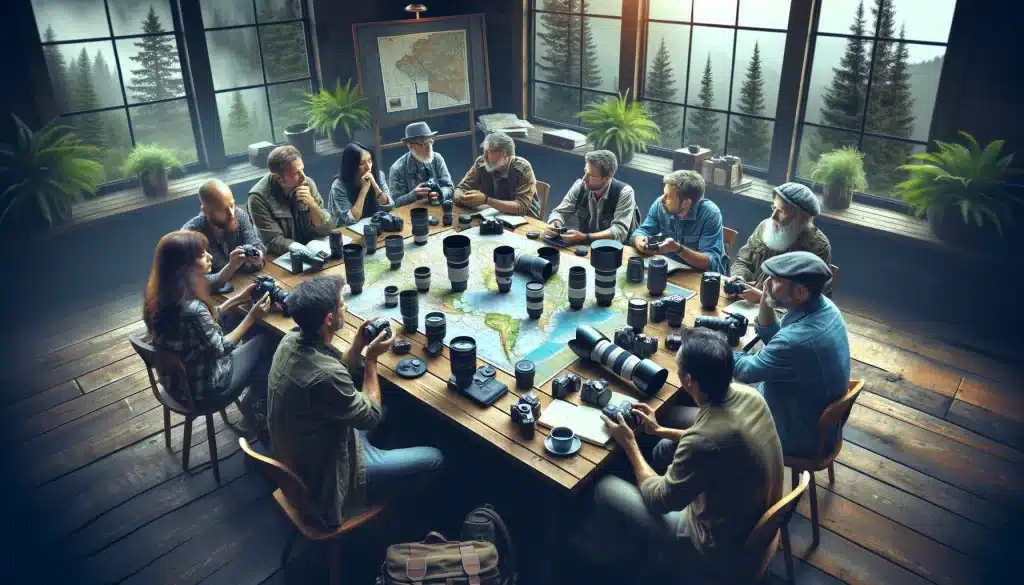
FAQs for the Best Landscape Photography Lenses
What is USM in lens terminology, and how does it contribute to sharp images?
USM, which stands for Ultrasonic Motor, represents a pivotal advancement in lens technology. By harnessing ultrasonic vibrations, USM facilitates swift and precise autofocus functionality in camera lenses. This innovation significantly improves the speed and accuracy of autofocus mechanisms, resulting in snaps of exceptional sharpness and clarity.
Will a Nikon camera with optical stabilization be a good choice for image creation?
Investing in a Nikon camera equipped with optical stabilization technology can profoundly enhance the quality of your image creation endeavors. Optical stabilization, a feature found in many Nikon camera models, serves to counteract the effects of camera shake when shooting handheld. This stabilization mechanism ensures that your images remain sharp and free from blur, even in situations where a tripod may not be feasible.
What is the price for ultra-wide-angle optics suitable for wide vistas?
Ultra-wide-angle optics, coveted for their ability to capture expansive vistas and sweeping landscapes, come in a diverse range of pricing options to cater to different budgetary considerations. From entry-level offerings to premium, professional-grade choices, you can find ultra-wide-angle lenses tailored to their specific needs and financial constraints.
Will investing in high-quality lenses provide better results for natural vistas snaps?
Investing in good-quality lenses is essential for achieving sharp and clear snaps in landscape photography, ensuring optimal performance and image quality.
Which brands offer top-notch natural vista shooting cameras in the market?
What is the difference between Canon's EF and EF-S camera mounts for framing a shot?
Canon’s EF mount is designed for full-frame cameras, providing a wider frame for capturing shots with more detail and clarity. On the other hand, the EF-S mount is specifically for APS-C sensor cameras, offering a narrower frame but still suitable for framing shots effectively.
How does Sony's outstanding landscape photography optics compare to Nikon's for capturing a shot?
Sony’s optics lineup offers diverse options for capturing a shot, from ultra-wide-angle, catering to various picturing needs. Similarly, Nikon’s camera selection provides an excellent choice for framing a shot with precision and creativity.
Conclusion
Mastering landscape photography isn’t just about having great lenses. It’s about focusing on them well, getting the most out of their features, and improving your photography skills. When I started using my wide-angle lens, it changed everything, letting me take good shots of landscapes and details.
Join these courses and take your photography to the whole next level. Photography, in general, is not a piece of cake. One good snap can make you famous in the internet world. We are sure that by following the tips and tricks mentioned in the courses your will be able to do wonders. These courses have been crafted by the industry experts and we know how to improve you photographic experience and what’s best for you.
Have a nice photoshoot!
Learn more about
- Camera Lens Reviews
- Landscape Photography Equipment
- Lens Buying Guide
- Photography Gear Recommendations
- Professional Landscape Photography Gear
Course
Light Effect Photoshop
Lightroom Course 2024
Adobe Photoshop Course
Photo Editing Course
Get the latest version of Photoshop & Lightroom





